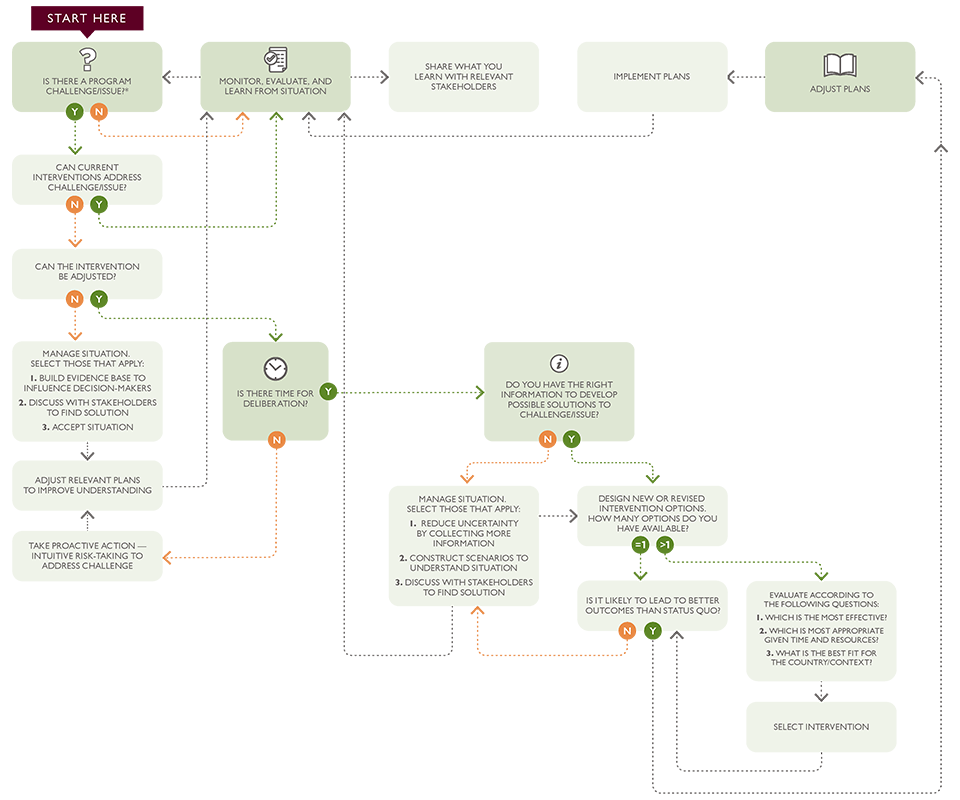Knowing When to Adapt
It seems that adaptive management is all the rage lately. And while we know the different ways to do it, we don’t know necessarily what it takes. This begs the question: what are the types of management decisions one should take to practice adaptive management?
A decision cycle is one tool that can help us understand how to manage adaptively. Cycles are the steps used by a team in a systematic way to reach and implement decisions, learn from the results, and adapt. Decision cycles exist across disciplines including the tech industry, the military, and the medical field, to name a few. They represent industry-standard ways of understanding a particular context and taking the necessary steps to make informed decisions. For example. the “plan–do–check–act/adjust” decision cycle is a popular example used in many management fields.

Reflecting on decision theory literature, examples from other industries and LEARN’s own experience with practicing adaptive management, we created a decision tree (see image above) to show the different decision points and choices we face when managing adaptively. This resource charts the important steps and choices and it provides a relatively simple way to ensure that missing decision points and alternatives are considered when managing your program.
The tool is intended to support adaptive management of programs by providing a set of clear decision points to intentionally and systematically manage the program. The tool begins by walking through a set of steps beginning with identifying the issue or challenge to your program. Following this, the tool outlines a set of questions regarding the ability of the intervention to address the challenge and the amount of time for deliberation. The tool then presents a set of options to manage the situation when there is insufficient time to deliberate. If there is time, the tool provides a set of choices for designing new interventions and how to evaluate multiple potential interventions along with assessing whether any new options are better than the status quo. The resource in either case points to making changes to existing plans and continuing to monitor, evaluate and learn from implementation.
If you have any feedback or thoughts on how to improve the decision tree, please leave a comment below. If you think it's useful, please share it with your colleagues.



